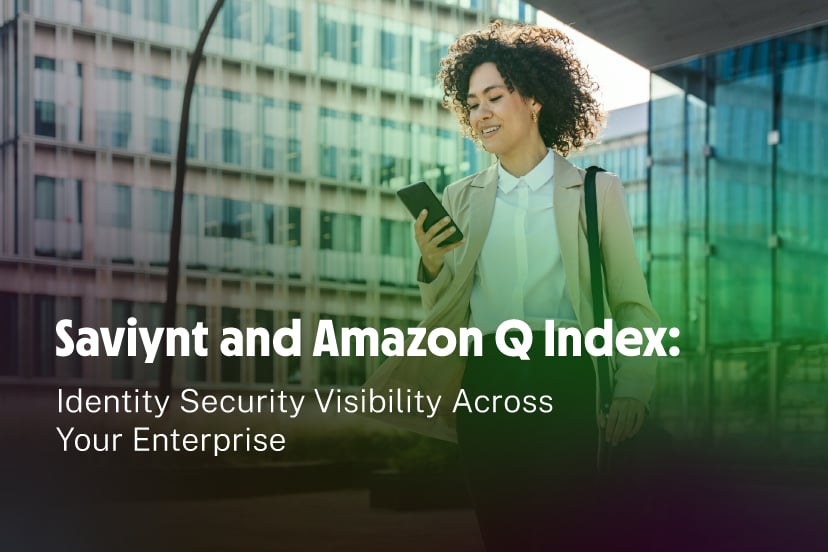Overview
Today’s digital era has created exciting opportunities for businesses to boost profitability by getting more value from their supply chains and seize growth opportunities by leveraging third party workers. Or, looking for sustainability by lowering emissions and real estate footprints by expanding work capacities.
As businesses become interconnected through digitalization and supply chain transformation, these organizations are finding themselves exposing more enterprise data. They are opening access to ERP systems, inventory management or other financial and operations “crown-jewel” applications, to conduct business with partners, vendors, suppliers, contractors and other non-employees.
Problems
This increased access by external identities opens companies to increased risk of cyber threats as its defenses are only as strong as the weakest link. If your suppliers’ defenses are more porous, the likeliness of an incident increases. In fact, in recent research by The Ponemon Institute and Mastercard’s RiskRecon, 59% of respondents indicated that their organizations have experienced a data breach caused by one of their third parties.
The traditional “castle and moat” security approach doesn’t stand a chance. This is why organizations need to place Identity at the core of their supply chain security strategy.
7 Reasons to Make Identity the Center of Supply Chain Third Party Security
1. Prevent unauthorized access:
- By verifying and managing the identities of individuals and the entities they belong to, you can control access to sensitive data and resources.
2. Reduce the risk of insider threats:
- Once they are given access, external users become insiders. Whether by malicious intent or honest mistake, improper access can put sensitive data, such as intellectual property, pricing, or customer data at risk. Strong identity security controls will help you detect suspicious activities and reduce supply chain risks.
3. Comply with regulations:
- Many industries and regions have strict regulations regarding data protection and privacy. By extending identity governance to your third parties, you can enable certifiers to spot improper access and toxic combinations faster, before they turn into security issues.
4. Protect against cyber attacks:
- Cyber attackers often target the supply chain to disrupt operations, steal sensitive information, or introduce malware. Securing identities helps defend against various cyber threats, including phishing, credential theft, and other tactics used by malicious actors.
5. Ensure supply chain resilience:
- A secure identity framework contributes to the overall resilience of the supply chain. By preventing unauthorized access and maintaining the integrity of data, organizations can better withstand disruptions and recover more quickly from incidents.
6. Build trust in the supply chain:
- Customers, partners, and stakeholders place a high value on trust in the supply chain. Securing identities helps build confidence by demonstrating a commitment to protecting sensitive information and ensuring the reliability of transactions.
7. Increase productivity:
- An identity-centric management approach can help you onboard external users more quickly, providing right-level access to the right resources and reducing the burden on your IAM team.
The problem is, our industry has historically lacked the tools to robustly manage third party identities and govern their access. Organizations have had to rely on homegrown solutions and non-purpose built tools. In addition, or perhaps as a result of this, many businesses lack enterprise-wide processes to manage third party identities in a consistent manner. Some of these process challenges include:
- Orphaned identities. Access was not revoked at the end of the engagement. Orphaned accounts are prime targets for hackers since they are rarely monitored or reviewed for accuracy.
- No succession management. There is no ability to review access and shift users from one manager to another when reporting relationships change.
- No risk context for your vendors, suppliers and contractors. There is no one place to register the various entities your company does business with, which makes it extremely difficult to assess the appropriate level of access for its employees. For example, traditional HR-tools do not manage the risk profile of the third-party worker’s employer.
- Sponsorship of external users is usually scattered throughout the company, making access management that much harder.
- Homegrown tools don’t necessarily allow external users to self-register for access, placing a heavy burden on help desk and IAM personnel.
- There is a limited understanding of how much access is necessary in the first place, meaning organizations run the risk of over-permissioning their third-party workers and partners.
A New Partnership Emerges
Saviynt and the EY organization recently announced a new collaboration and solution to address supply chain and third party identity risks. This relationship brings together Saviynt’s leading converged identity platform for user and access management with EY extensive identity and access management (IAM) consulting experience.
Saviynt’s #1 Enterprise Identity Cloud delivers unparalleled visibility, control and intelligence to better defend against threats while empowering users with right-time, right-level access to the digital technologies and tools they need to do their best work.
EY teams brings a deep understanding of clients’ needs and strategy with innovative IAM solution design. According to the announcement, “Saviynt’s approach to managing these identities will simplify the administration of these external people throughout the entire identity lifecycle.” EY’s experience combined with Saviynt’s technologies solve current challenges with an eye towards the future, developing solutions that can flex to accommodate changing requirements and industry innovations with relative ease.
The EY-Saviynt external identity and access management approach helps clients to simplify the on-boarding, administration and eventual offboarding of the external workforce, suppliers, partners and more, while also improving the user experience. Security and Compliance leaders will be able to incorporate granular intelligence from the identity platform to make risk-based access decisions.
Want to learn more? Check out our two-part webinar series on ’The 4 Rs of an Identity-Driven World:









